The origin of the name Hilux
Hilux is derived from the words "high" and "luxury."
1968
1st Generation (1968―1972)
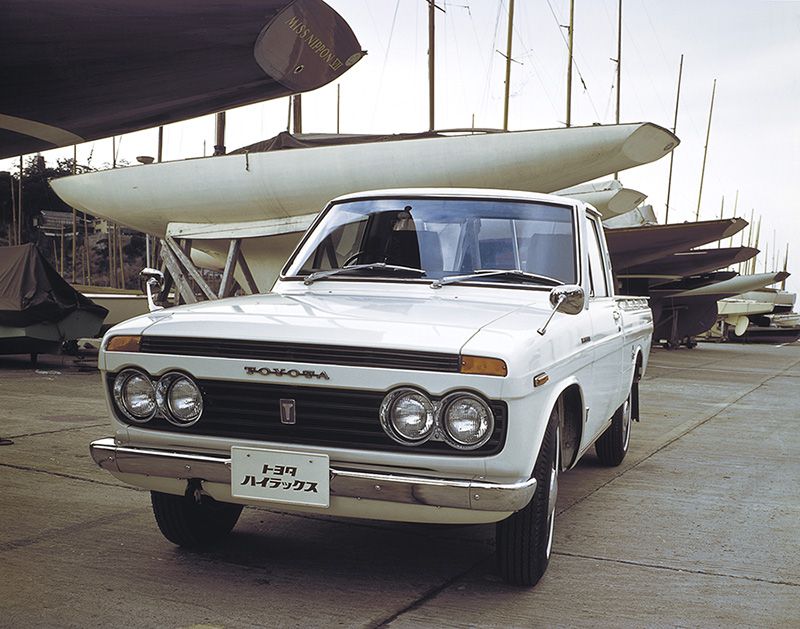
The Hilux debuted in March 1968 as a new bonnet-type truck that integrated and succeeded the Briska and the Light Stout. The vehicle was conceived by Toyota, and was developed and manufactured by Hino Motors, Ltd. at its Hamura Plant.
The engine was a 1.5-liter 70 PS unit (2R) that was also used on the Toyoace. The Hilux adopted a separate frame construction with a double wishbone/coil spring front suspension and a rigid axle/leaf spring rear suspension. The transmission was a 4-speed manual with a column shifter. The Hilux had a passenger capacity of three and a payload capacity of 1,000 kg, with a cargo bed that was 1,850 mm long.
1972
2nd Generation (1972―1978)
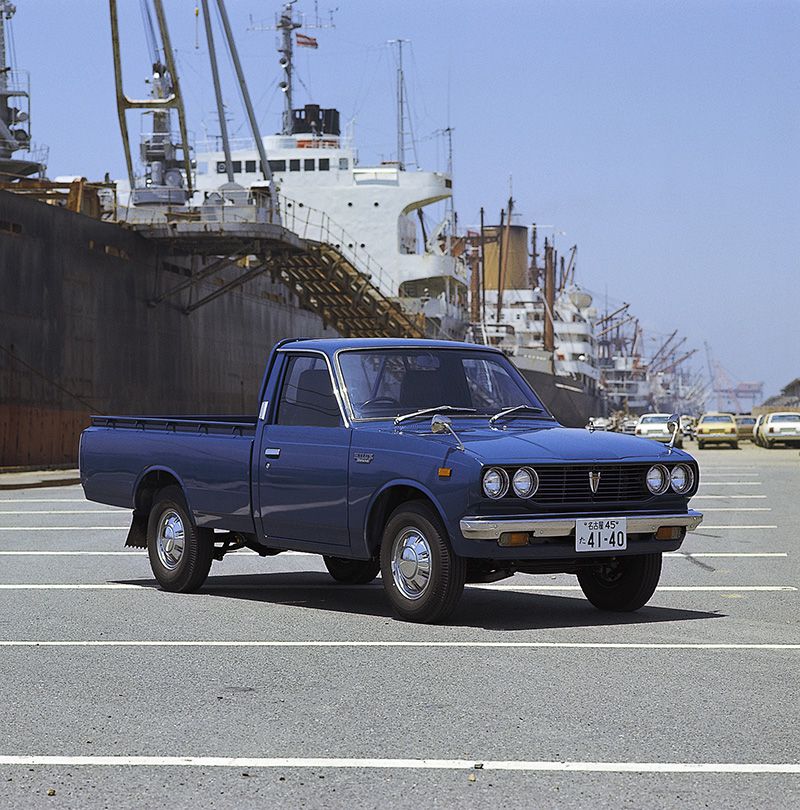
The second-generation Hilux was placed on the market in May 1972. Both the long and short wheelbase versions succeeded the predecessors' mechanical components, although they extended the wheelbase by 10 mm and 45 mm, respectively. The length of the deck and the maximum payload capacity remained unchanged. In addition to the standard model equipped with the existing 1.6-liter engine, the Highway model fitted with a 2.0-liter 105 hp engine (18R) was introduced for smoother driving on expressways.
1978
3rd Generation (1978―1983)
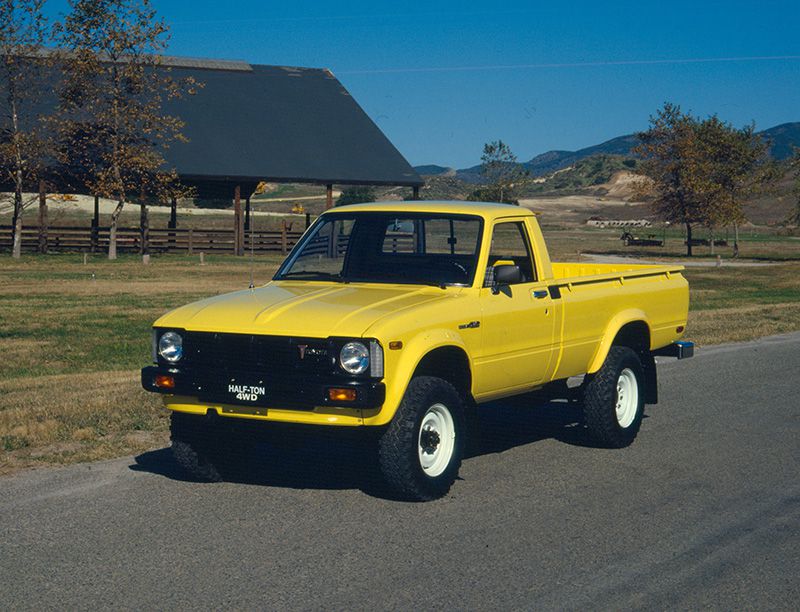
The third-generation Hilux went on sale in September 1978. Its model offered sedan-like specifications and equipment as well as ride comfort. The variations included three standard-length models and four long-body models. The new top-end Super Deluxe model came with an extended cab that was 90 mm longer than a standard cab, enlarging the interior space. The 1.6-liter 12R-J engine was inherited from the previous generation. The double wishbone front suspension remained unchanged, except that the coil springs were replaced with a torsion bar. Front disc brakes were standard-equipped on the Deluxe grade models and above.
1983
4th Generation (1983―1988)
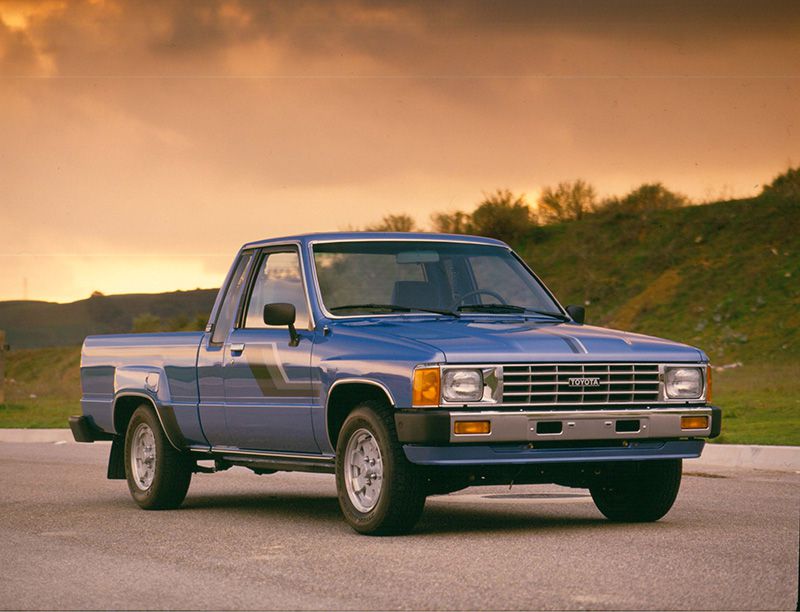
The fourth-generation Hilux was released in November 1983. The rear-wheel-drive (RWD) models included the Comfortable series and the Popular series; the former was the fourth-generation model with renewed interior and exterior design, while the latter was the third-generation model that remained in production. All 4-wheel-drive (4WD) models came with a new body. The external appearance of the fourth-generation models were characterized by their blister fenders in the front and rear.
1988
5th Generation (1988―1997)

The fifth-generation Hilux that came out in September 1988 represented the three basic concepts of power, sturdiness, and comfort. To enhance its functionality as a multi-purpose vehicle (known as RV or recreational vehicle in Japan at the time), the interior equipment was further upgraded. The basic body variations were reduced to one featuring pressed doors with integrated window sashes. A major difference between rear-wheel-drive (RWD) and 4-wheel-drive (4WD) models was the wheel arch flares: RWD models had fenders without flares, whereas 4WD models came with sturdy-looking over fenders with flares. For this reason, the width of 4WD models became 1,690 mm, or 40 mm wider than that of RWD models. The design of the dashboard and other interior equipment became even more sedan-like than before.
1997
6th Generation (1997―2004)
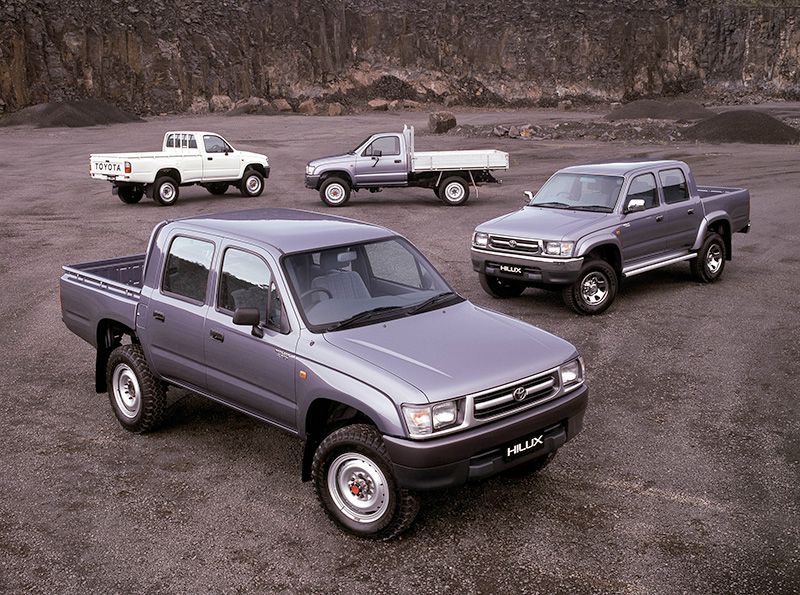
The sixth-generation Hilux that was introduced in September 1997 consisted of a business-use truck line and a personal-use sports pickup line. The latter came with equipment and devices suitable for a multi-purpose vehicle, featuring extended cabin height and length as well as improved quietness. The extra cab model, introduced in November with the body width extended by 100 mm, was an open-deck multi-purpose vehicle featuring an adequately long cargo bed while adding two auxiliary seats to the rear of the cabin.
2004
7th Generation (2004―2015)
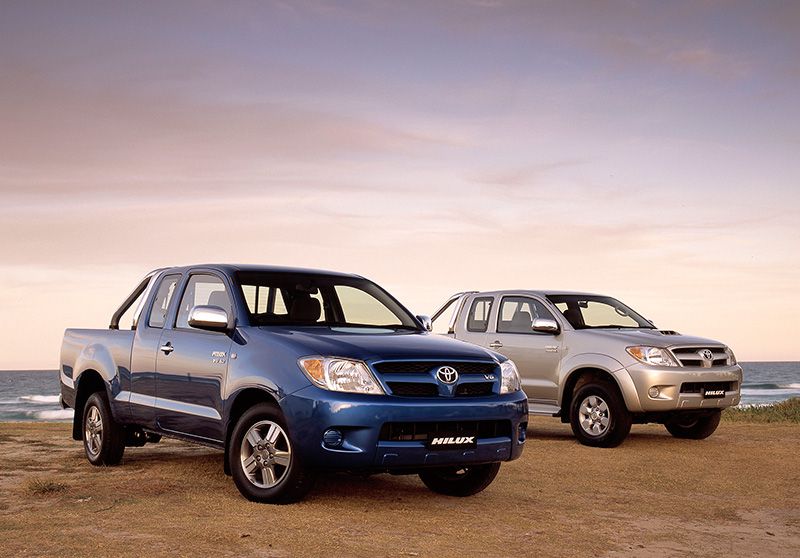
The seventh-generation Hilux was launched in August 2004 as a new pickup truck for sale into more than 140 countries worldwide. Inheriting its rugged styling from the sixth-generation model, it offered 21st century customers the high levels of durability and comfort they were looking for, with lots of interior space, improved comfort, and both the ride comfort of a passenger vehicle and the convenience of an SUV.
As part of the Innovative International Multi-purpose Vehicle (IMV) project, Toyota developed five new models on a single platform―three pickup truck models (Hilux), one minivan model (Innova), and one sports utility vehicle model (Fortuner).
To provide its customers around the world with more appealing products at a more affordable price, and released at the same time, it also developed optimal production and supply systems on a global scale.
This seventh-generation Hilux was the first to not be produced in Japan, with most of the vehicles being produced in Thailand, South Africa and Argentine for delivery to counties in their own regions, and with some production in Malaysia, Pakistan and Venezuela.
2015
8th Generation (2015―Now)

The eighth-generation Hilux was launched in May 2015. To truly understand what customers expect and the challenges they face on a daily basis, the development teams traveled the globe, getting direct feedback from customers and driving on a wide variety of different roads to get a feel for different usage conditions.
The entire development concept for the eighth-generation Hilux was centered on 'redefining toughness,' with the aim of making the new Hilux 'tougher' based on a much broader interpretation of that word. The eighth-generation Hilux design was not only tougher but also reduced stress as much as possible. Above and beyond conventional ideas of toughness, it boasted ride comfort that made long, tough drives less grueling, a quiet cabin that allowed communication in any conditions, and enhanced cruising range thanks to improved fuel efficiency. It could also be relied on to provide the legendary ruggedness, performance, responsiveness and safety expected from the model.



